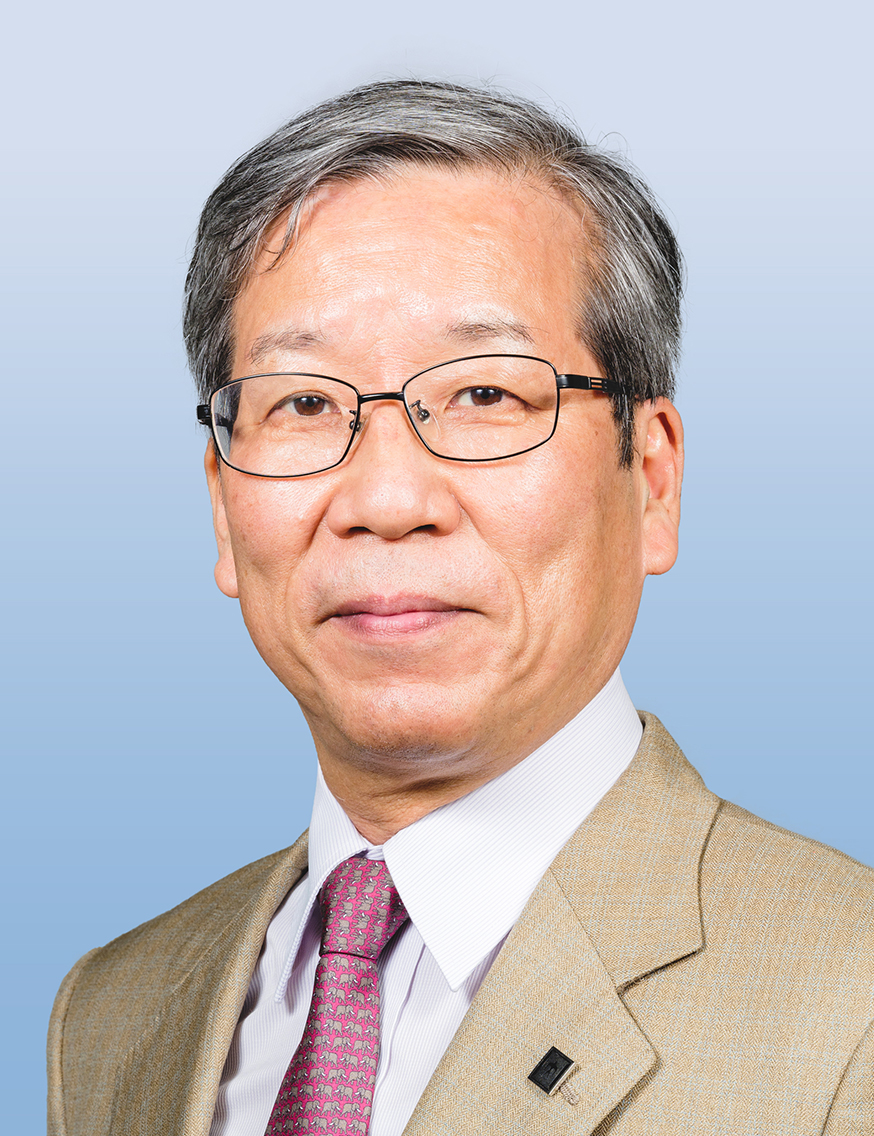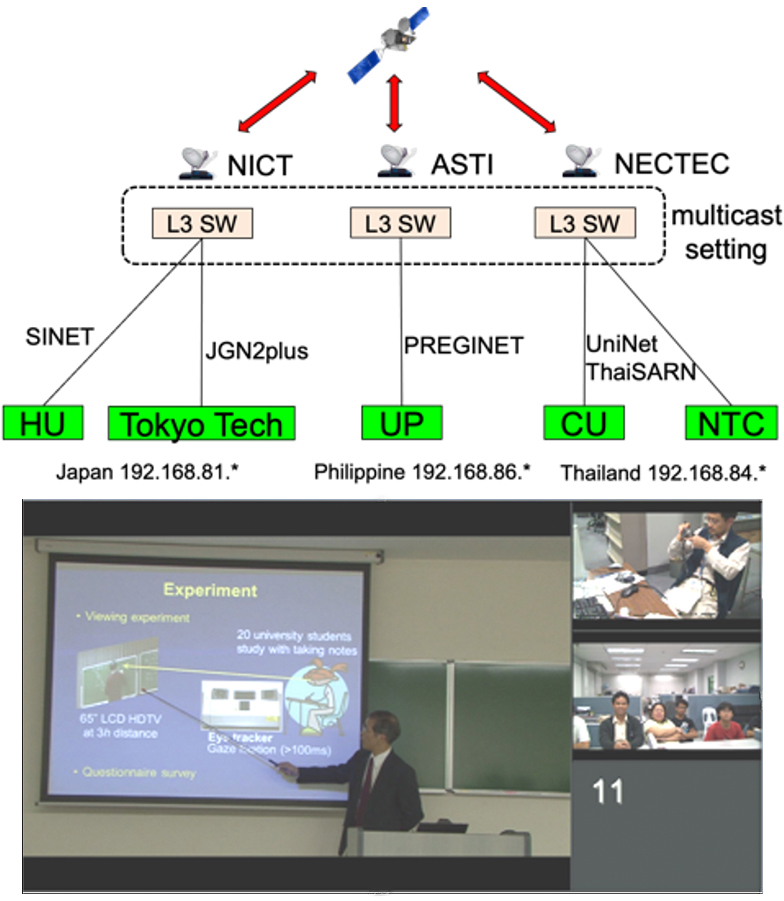Achievement Award
Contribution to Educational Practice using Information and Communication Technology

With the rapid growth of high-speed, large-capacity internet and satellite communications technology in the 21st century, the role of multimedia communications has been recognized in the field of education, enabling high-quality education without the constraints of time and place. In particular, there is a stronger need in academically developing countries in Southeast Asia and elsewhere, especially in the process of strengthening higher education, as it provides a means of resolving issues such as the problem of securing lecturers. On the other hand, for Japanese institutions of higher education, providing educational services overseas while maintaining a base in Japan and competing in the global market will strengthen the educational activities of Japan.
At the Tokyo Institute of Technology, to which the award recipient belongs, he has been proactively implementing high school-university cooperative education and international distance education using satellite communications since 2003(1)(2). In particular, he has worked to prove the effectiveness of international distance education using state-of-the-art digital technology and video communications compliant with international standards. Since 2006, he has promoted a project(3) on international distance education using JGN2 (Japan Gigabit Network 2; later developed as JGN2plus and JGN-X), an ultra-high-speed and highly functional R&D testbed network promoted by the National Institute of Information and Communications Technology (NICT), and has also worked to advance other international collaborative research as a member of the International Collaborative Research Promotion Subcommittee. These contributions have been highly evaluated, including with a JGN2plus Award (Network and Operation Technology Award) in 2011.
From 2007 to 2013, he served as the chairman of the Utilization Experiments Council, which organized 53 utilization experiments of the Wideband Internetworking Engineering Test and Demonstration Satellite “KIZUNA,” contributing to the development of satellite communication technology and successfully conducted distance education experiments that seamlessly connected satellite and ground networks for the multicast transmission of high-definition lecture videos. Since 2012, he has been using flipped lectures and “Daifuku-cho (study portfolio)” to promote student understanding and the retention of learning content in lectures at Tokyo Tech(4)(5). These activities pioneered the use of information and communication technology in educational practice, and his contributions are significant in that they led the way in the early days of distance education, which is now used by all educational institutions under the COVID-19 pandemic.
In addition, the award recipient has also focused on enhancing ICT-related education in elementary and secondary education. In 2012, prior to the introduction of mandatory programming education in elementary schools in Japan starting in 2020, he was giving on-site programming lessons at public elementary schools in Tokyo, and has continued to do so in order to foster logical thinking skills in all students(6). Programming-based learning promotes understanding and the interpretation of the cause-and-effect relationships and problem structures of the content studied in a subject, and has the potential to bring educational benefits not only to science and mathematics subjects, but also to various other subjects and studies. The award recipient, utilizing the knowledge he has cultivated in his specialty of educational engineering, has been engaged in a wide range of efforts, not only in terms of learning programming, but also in examining more effective teaching methods in terms of the significance of modeling the subject matter and learning how to think, which is the framework of learning methods(7).
These activities are widely recognized and have been introduced in NHK TV programs, etc. In addition to these activities, as an IEEE Region 10 Director, he has planned and conducted webinars in regional native languages for a wide audience, including junior high and high school students, under COVID-19, when students stayed home more often, and has been holding a webinar series continuously in Japan as IEEE Engineer Spotlight since 2020(8). The webinars are open to a wide range of audiences, including but not limited to IEEE members, and will greatly contribute to expanding the base of the field of electronics, information, and communications.
As described above, the award recipient’s consistent educational activities utilizing information and communication technology are considered to be extremely significant accomplishments that qualify for the IEICE Achievement Award.

References
- H. Niiyama and A. Nishihara, “Globalization Strategy of Tokyo Institute of Technology and Graduate Lecture Delivery via Satellite,” Journal of IEICE, vol. 86, no. 11, pp. 821-825, Nov. 2003.
- A. Nishihara, “International Distance Education at Tokyo Tech,” Asian Engineering Journal, vol. 1, no. 2, pp. 31-39, June 2011.
- A. Nishihara, S. Shinomiya, and K. Okuda, “The Possibility of High-Definition Distance Education with Foreign Countries: A Report on H.264-based HD IP Transmission between Thailand and Japan Using JGN2 Network, Motion Picture and Television Engineering, No.657, pp.18-26, May 2007 (in Japanese).
- Tokyo Tech OCW, ref. Apr.14, 2023.
- Best Engineering Teacher Award, Tokyo Institute of Technology, AY2013 ref. Apr. 14, 2023.
- N. Kuriyama, T. Saito, H. Mori, and A. Nishihara, “Effects of Programming Lessons in Elementary Schools,” Computer and Education, vol. 51, pp. 27-32, Dec. 2021.
- N. Kuriyama, H. Mori, and T. Saito, Programming Concept from Six Years Old, A. Nishihara (ed), ALC Press Inc., Tokyo, 2021 (in Japanese).
- IEEE Japan Council, “IEEE Engineer Spotlight,” IEEE Japan Council,https://www.ieee-jp.org/japancouncil/EA/EngineerSpotlight/ ref. Mar. 31, 2023.